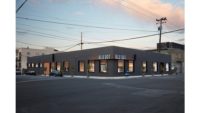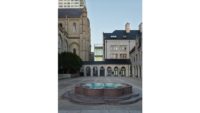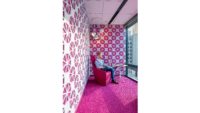It would only make sense for the building that houses art from some of the most creative minds be just as cultivated, talented, and sharp as the pieces of modern art that reside inside.
With the new addition to the San Francisco Museum of Modern Art, the square footage nearly tripled allowing more room for creatives to gather in the bay area. Since closing in 2013 for the highly anticipated expansion, the newly renovated MOMA is now open featuring 33,000 works of art.
The new construction did not only increase the size and offer an additional 45,000 square feet for visitors to roam, but the San Francisco MOMA now offers a new art experience and gateway into the city. The museum will serve as a welcoming center for arts education and an important public space. The new expansion runs contiguously along the back of the existing Mario Botta-designed building which opened in 1995, allowing for a seamless integration of the two structures.
A strong focus on the residing city can be seen throughout the museum, so it only makes sense that RFJ Meiswinkel Co., a San Francisco-based company, was asked to join architectural firm Snohetta and general contractors Webcor Builders to be involved in the exciting project.
With 33 years in business, RFJ Meiswinkel and its 100 employees have been operating in the bay area and providing services such as metal framing, lath, plaster, drywall, taping, EIFS, spray fireproofing and cement panels. Along with its many trades, RFJ Meiswinkel thrives on technically complicated projects, and with a goal of growing the company by 4 to 5 percent a year, having the new San Francisco MOMA on the resume won’t hurt.
Getting Technical
From providing all the cold-formed metal framing to thermal and acoustical insulation to gypsum board and plaster, you can say that RFJ Meiswinkel definitely had its hands full.
|
Company: RFJ Meiswinkel Company |
Using products from some of the industry’s most known manufacturers; Scafco Corp., Pyrok, Georgia-Pacific, CEMCO and Hilti were used to deliver design elements in the walls and ceilings requested by the architects of this project. Georgia-Pacific was the manufacturer used for all gypsum board, Scafco Corp. provided the framing for the walls and ceilings, and all the GFRG ceiling panels were custom formed and created by GC Products. The interior acoustical plaster was StarSilent Acoustic Plaster by Pyrok Inc.
The walls were designed to be finished with a level-5 finish throughout the museum. With doing so, all the gallery walls had a continuous layer of plywood under the top layer of gypsum board to act as continuous backing for the art to be hung. Additionally, each gallery wall had a top and bottom recessed black tape in reveal which gave the walls a floating effect.
The ultimate goal was to make the ceilings in each of the galleries unique and to stand out as their own work of art. To achieve such a goal, some ceilings were designed and built out of StarSilent Acoustical Plaster which is a special interior plaster made of a crushed glass product which has a very high sound absorption property. Other ceilings were made of custom formed GFRG shapes. The two main gallery floors featured a wave ceiling made of 200 unique shapes that when assembled together created a continuous row of waves.
The design of the new expansion on the MOMA project featured many unique architectural features including specialty wave shaped ceilings, high sound absorbing acoustic plaster, a three story tall wall that was curved both in plan and section, floating wall trim at the top and bottom of gallery walls to create a floating look and a great room where the walls continue up 48-feet. One could almost say the true artists of the exhibits are the architects, general contractors, and the contractors who diligently created the perfect design elements to give visitors the ultimate art experience. While the paintings on the walls and the exhibits that reside inside may come and go, the art created within the walls and ceilings will remain the same.











